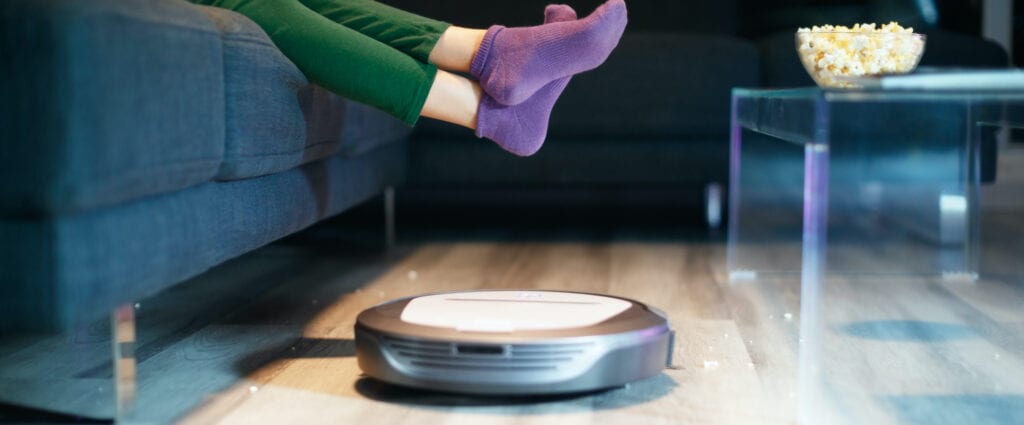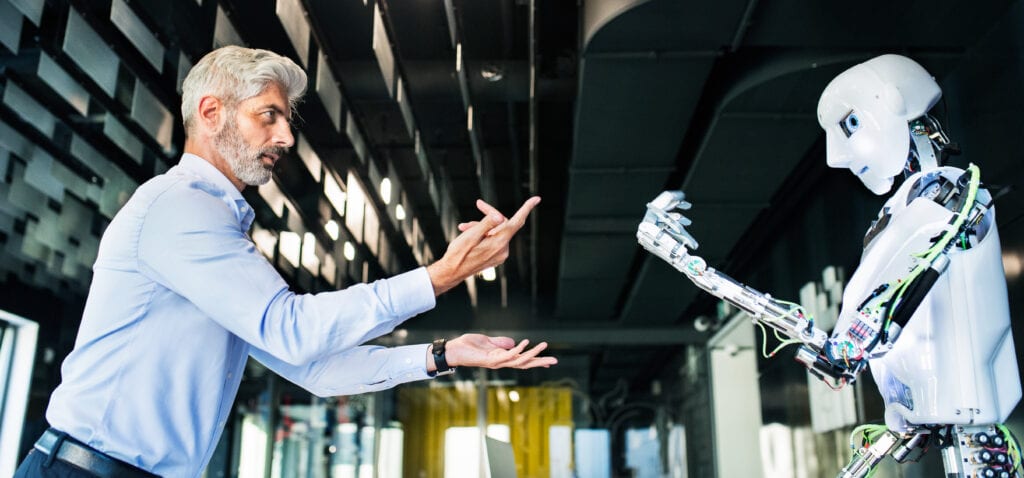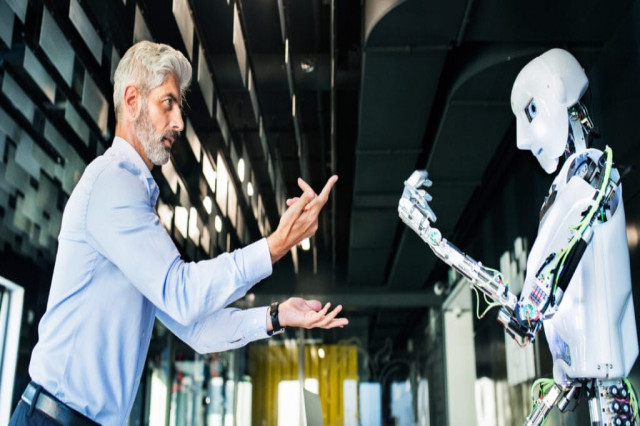What will robotics and AI be like in 2040?
“I am at a rough estimate thirty billion times more intelligent than you.”
– Marvin, from The Hitchhiker’s Guide to the Galaxy
Marvin was a fictional cybernetics prototype with Genuine People Personalities (GPP). As such, he was perfect in every way except for the ways in which he was similar to humans. He was therefore the most depressed individual in the galaxy.
Thanks to ongoing advances in Artificial Intelligence (AI), real robots are getting smarter without as yet having any distracting emotions. They might not be sentient; they might not ever be sentient, but every year they are becoming more capable of analyzing data and making decisions that simulate human reason. What they do, they do fast and accurately.
Humans still have many advantages over robots and AI. Our artificial counterparts will continue to improve, though, and will likely surpass us in many of the areas we currently dominate. At best, we can make educated guesses regarding what robotics and AI will be like in the future. To be as authentic as possible, forecasters shouldn’t look too far ahead, so here are some queries and predictions about what a world with smart robots might be like in the year 2040.
At home
Dust and dirt will still exist in 2040, so chores will still demand human attention. Humans, in response, will continue to demand labor-saving devices that make their lives easier.
By the middle of this century, Roomba descendants will do more than roam and vacuum. They could be more like Rosie, interacting with humans and sharing detailed information about the state of the domicile. Rosie’s standard tools were housekeeping gadgets that emerged from her metallic torso, but her true talent was sassing the Jetsons—largely because the show’s writers were able to project their creative license onto scripts and characters.
In reality, creativity remains an obstacle for AI, making them better suited for home entertainment systems than home entertainment producers. The best that any current AI can deliver seems to be patched together from existing human achievements, although perhaps by 2040 a script or two will demonstrate originality instead of flighty mimicry.
In any case, personal robots might be as commonplace in 2040 as smartphones are today. Acting as a communications hub and all-around assistant, these smart devices will coordinate with humans and machines alike to facilitate both efficient productivity and timely leisure. As kitchen robots prepare family meals, assistants will help professionals squeeze more work into a typical evening while their children will help them master school subjects in less time.
In addition to performing chores and providing personal assistance, robots will also help human owners monitor their health, identify concerns, and then either administer treatments or make necessary appointments. Some AI already demonstrates diagnostic equivalency, even superiority, though they could improve their bedside manner. As Marvin would say with clinical detachment, “I could calculate your chance of survival, but you won’t like it.”
On the job
During the first two decades of this century, the workplace changed dramatically. Billions of people headed online, and remote jobs became more accessible. Factories and farms became more automated as the Fourth Industrial Revolution gained momentum.
As robots and AI have become ordinary elements of the economy, some people have started to fear for their jobs. Such concerns, though, seem to be based on the same shortsightedness by which loom-destroying Luddites gained anti-technology notoriety. The truth will likely be more advantageous for all of humanity as new careers, including robot maintenance and even robot counseling, inspire opportunities for training, entrepreneurship and entire industries.
By 2040, HR departments will themselves be more hybrid, integrating the best of people and machines to support employees as they work to improve themselves. Humans and AI will team up to expand business automation and preserve hiring opportunities even during uncertain times.
Eventually, efficiencies of production and economies of scale will make autonomous machines affordable for every firm from blue chip to startup. Robots will be able to build their own replacements, and AI will design next-gen versions of themselves. Human oversight will remain important for preventing any kind of HAL 9000 misstep.
Between home and work
Workers might sometimes forget, but between home and work lies the rest of the world. As augmented careers bring opportunities to produce more of the goods and services that consumers demand, prices for most things will tend to decrease.
Many present luxuries become future necessities. By 2040 there could be an abundance of not only self-driving cars and motorcycles but also a complete transportation system with affordable commuting options for road, rail, and flight. Commuting might offer opportunities to catch up on work or socialize or sleep.
What about stops during the commute? Is anyone in the future going to shop at brick & mortar stores? What will customer service be like in 2040, when the convenience of online shopping meets the practicality of just-in-time manufacturing and drone delivery? Will humans praise or curse a cocoon-like routine from home to work and back again? Will aspiring butterflies book flights on autonomous jetliners serviced by robotic pilots, only to spread their metaphorical wings on a beach serviced by robotic cabana boys? Will remote, off-the-grid locations become this century’s most popular luxury retreats?
Conclusion
When discussing the future of robotics and AI, references to Marvin or Rosie or HAL 9000 are helpful because speculation is a type of fiction. Could robots in 2040 have the ennui of Marvin, the sarcasm of Rosie, or the psychopathy of HAL 9000, or will they always lack that metaphysical spark separating prosaic from spiritual?
Practical innovations are nevertheless propelling AI toward a future that will likely realize at least some of the current speculations. Machine minds experience deep learning with unforeseeable results. Memristors promise a sea change in neural networks. Quantum computing is, by definition, a perplexing consideration. Predictions don’t guarantee results, but without them, there would be little to no human innovation.

